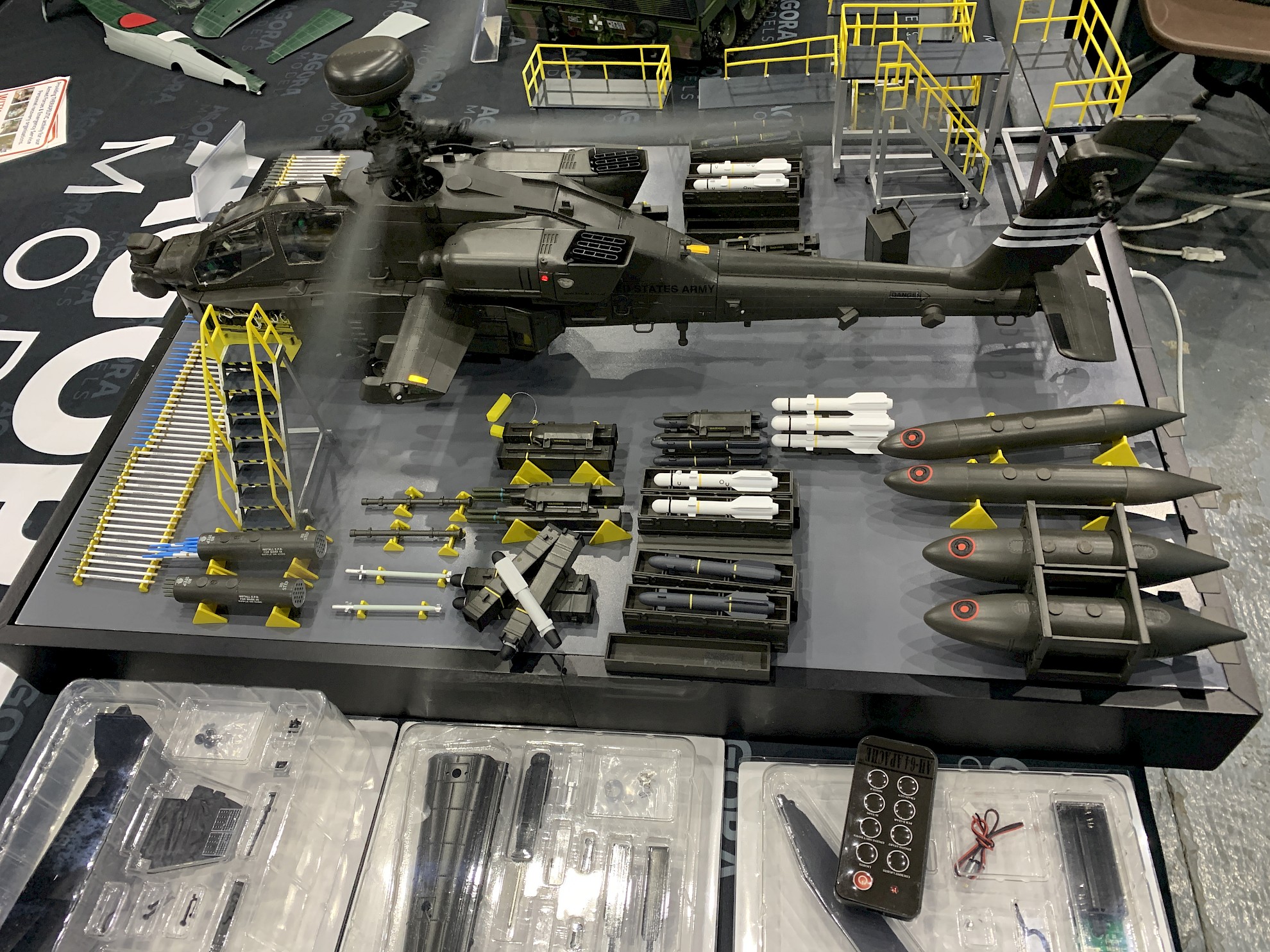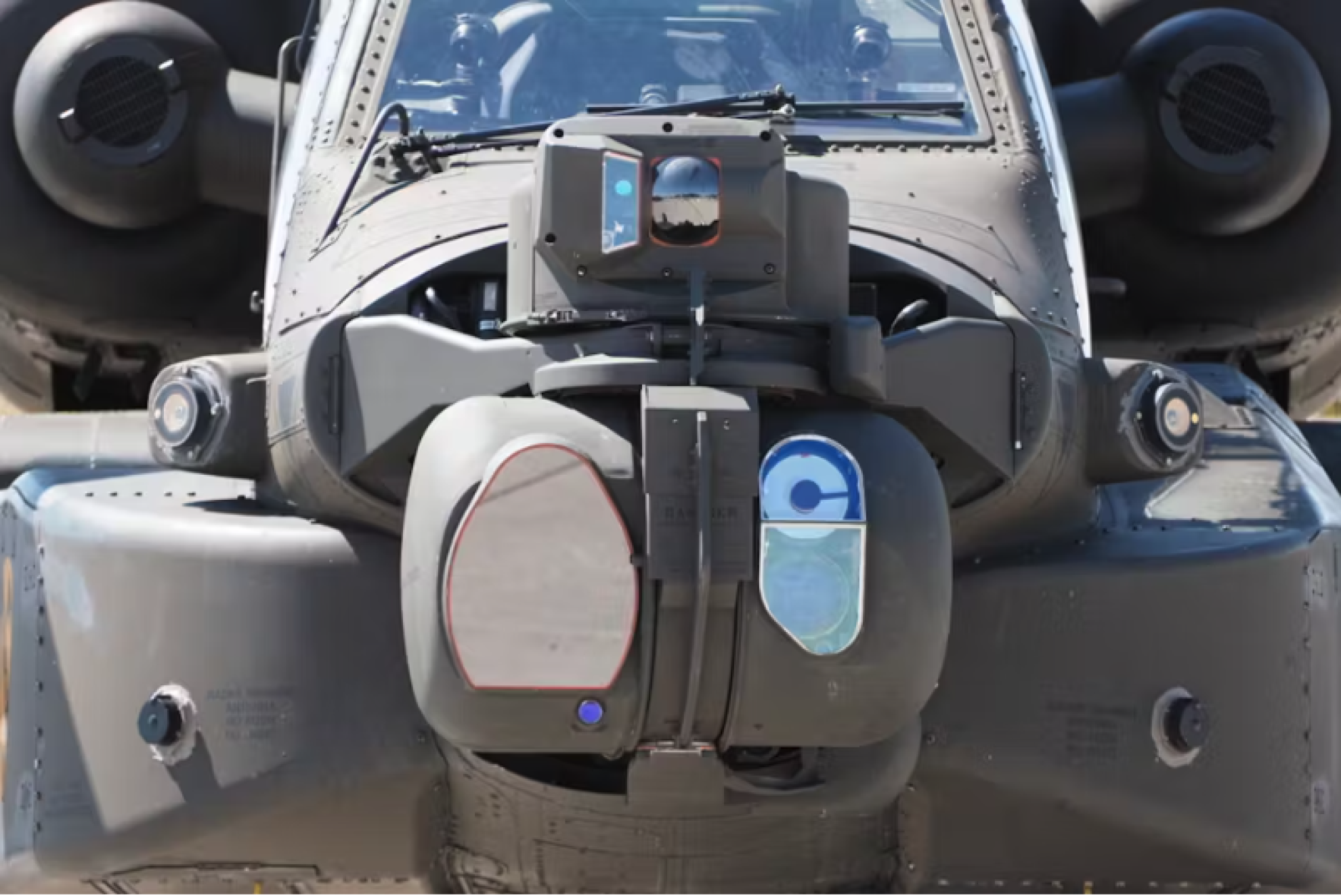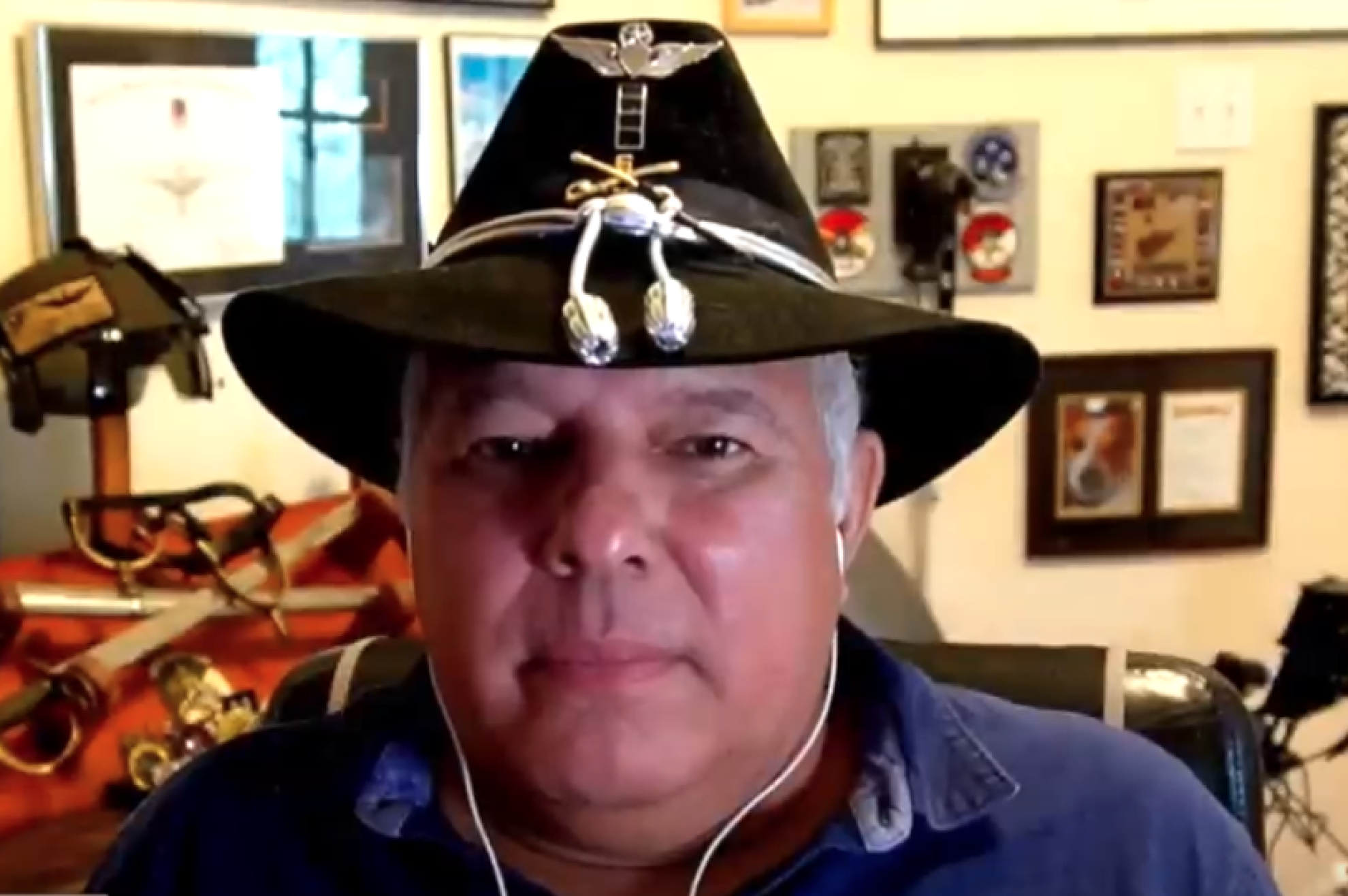Flying the AH-64D Apache
“Flying the Apache for the first time was absolutely unbelievable, the power that you had, how smooth it was, it just sounded like … a… Ferrari…”.
- Daniel Flores
Last year we included a prototype model of the AH-64D Apache Longbow helicopter as part of our display at Scale Model World, Telford UK. It drew very welcome attention from most who passed our stand due to the impressive ordnance display and unmistakable whirring of the rotors.
Credit: Scale Model World, Telford, UK, 2023
Amongst admirers were two veterans who were particularly interested in our model due to their close connection to the Apache; one chap had been responsible for weapons testing at Middle Wallop, and another served with the AH-64 while with the Army Air Corps. It gave us the perfect opportunity to invite some critical feedback on our model…
The general response at the show was so encouraging that we brought forward the launch of the Apache, adding it to our growing catalogue of models in order to broaden our range and offer something a little different. It now joins the Leopard and the Zero in our military range, and there are more in the pipeline.
With the Apache we continue our mission to develop models that stand out from the crowd in terms of achievement and appeal of their real-life counterparts. Here’s why the Apache is top of our list for military models.
In the words of former US Army Apache pilot Daniel Flores
“Walking up to it the first time, they are unbelievably huge, they’re very very big and that’s why the first time I walked up I thought wow this thing’s big, but it’s extremely manoeverable, it’ll roll, it’ll loop, it’ll do some good hard turns, it’ll pull some Gs, if you do it right with enough power in the bucket speed as we call it, you can pull a good 4 Gs in all… “
“Flying the Apache for the first time was absolutely unbelievable, the power that you had, how smooth it was, it just sounded like … a… Ferrari…”.
You can watch the whole interview with Daniel Flores here:
Credit: Flying the AH-64 Apache, Interview with former U.S. Army Apache pilot, Daniel Flores
Described as the world’s most advanced attack helicopter, the Apache has an impressive technical specification.
WEAPONS
Weapons systems include a 30mm automatic M230 chain gun located under the fuselage, capable of firing up to 625 rounds per minute at targets in excess of 3,000 meters. It can be aimed both at where the sights are pointed but also at where the pilots head is pointed.
Apache fire power includes a 2.75 inch Hydra 70 rocket system. Each rocket tube can take up to 19 rockets, and four tubes can be carried on the aircraft at once giving a total of 76 rockets. Various warheads can be used depending on the mission; it could be high explosive, airburst or illumination.
The Apache’s primary weapon system are the AGM-114 Hellfire air-to-surface missiles used for tank busting. Taking four on each pylon gives a total of 16 if needed. The missiles can be laser guided or radar guided depending on the mission. Its range is 8km to 12km.
The Apache can also be equipped with air-to-air missiles (Stinger, AIM-9 Sidewinder, Mistral and Sidearm).
British Army Apache helicopters are armed with the CRV7 70mm rocket system.
SENSORS
The Target Acquisition Designation Sight (TADS) on the nose of the aircraft contains the forward-looking infrared camera that relays information to the pilot and the gunner through their helmet mounted eye piece. With this system, a target is able to be identified, tracked and engaged using the full load out of the Apache’s weapons. A Pilot Night Vision Sensor is also located on the nose above the TADS.
The new targeting and night vision system for the AH-64 Apache uses second-generation long-wave infrared sensors with improved range and resolution, known as Arrowhead. It has targeting FLIR (Forward-Looking Infrared) with three fields of view, a dual field-of-view pilotage FLIR, a Charge-Coupled Device (CCD) TV camera, electronic zoom, target tracker and auto-boresight (alignment of the firearm with the target).
The AH-64 has two cockpit stations, one for the pilot and another for the gunner. Both seats contain flight controls and the ability to fire weapons. Being in the front, the gunner has the best view of the terrain which makes it easier to identify enemy targets. Sitting slightly elevated in the back the pilot station also gives a clear forward view, but it’s better optimized for flying.
The gun is connected to the helmet display unit attached to the gunner’s helmet so wherever the gunner looks, the gun will follow the eyeball. The crosshairs seen in the unit then fix on the target, ready for the gunner to squeeze the trigger and destroy the target.
Credit: WHITEMAN AIR FORCE BASE, Mo. -- U.S. Army Capt. Joel A. Lewis, 1-135th Attack Reconnaissance Battalion AH-64D Apache Longbow pilot, prepares to fly a training sortie on an AH-64D Apache Longbow April 24, 2012.
An Integrated Helmet And Display Sight System supplied to the US Army by Elbit Systems of America.
STRUCTURE AND PROTECTION
Structurally, the pilot and copilot/gunner are protected by 2,500 pounds of light boron plating and Kevlar-lined seats, protecting them from 12.7-mm machineguns and 23mm flak cannons (the main types of weapons that are often encountered on the battlefield).
A transparent armor glass blast shield separates the pilot from the copilot/gunner to prevent fragments from a hit in one cockpit from injuring both crew members.
Both laser and radar-warning receivers alert the crew to imminent missile attacks, and a rotor-mounted ALQ-144A “disco ball” infrared jammer can help mis-direct heat-seeking missiles.
ENGINES
The Apache attack helicopter is equipped with two turboshaft engines, each providing 1,265kW. The American AH-64D is powered by General Electric T700-GE-701 engines and the UK Apache is fitted with RTM322 engines from Rolls-Royce / Turbomeca contained in heat-signature-reducing pods.
Engine exhaust is channelled through a Black Hole system with a primary and three secondary cooling nozzles which reduce the temperature of the engine exhaust, reducing the aircraft’s Infrared signature.
Daniel Flores giving his interview to Aircrew Interview
In his interview with Mike on his Aircraft Interview channel, former U.S. Army Apache pilot Daniel Flores talked first hand about the importance of the protection measures of the Apache and how fire protection mechanisms are essential for maximising survival in the event of a hit:
"The Apache is equipped with two self-sealing fuel cells which have a nitrogen inerting system that reduces the oxygen content in the fuel cells. As the fuel is used, the void is filled with nitrogen instead of air so there is less chance of a fire.
The fuel system is ballistic tolerant and crash-worthy. The pumps to feed fuel to the engine are suction pumps so if one of the fuel lines gets a bullet hole in it, it’ll suck air and the engine will flame out. The fuel cells are ballistically tolerant to a 50 calibre high explosive incendiary round. If the round punches through the fuel cell, it will self seal. The fuel cells will take about 100 G impact before it will bust. Made of Kevlar, they are bag-like rather than hard.
The oil tank is built into the engine, not separate, providing extra protection, and if one engine is hit, the Apache is capable of flying on one engine. Each engine cell is in its own stainless steel box, separate from the aircraft. If there was a fire, the vents could be closed, the fuel shut off and the fire wall shut off. Then you blow the halon into the engine compartment, so everything goes out the back through the exhaust. The Apache is then capable of flying on one engine. The gearboxes are designed to fly without oil for 30 minutes. The tail rotor box use grease rather than oil.
On a vertical impact on a crash, the gun has a shoot that goes between the front and back seats. The gun can also break off on forward impact. Both seats will collapse absorbing more vertical G impact. The landing gear is on huge shocks and will fold up and collapse into the underside of the helicopter.
If you were to be hit with a 50G vertical impact, by the time everything stroked (landing gear, stub wings, fuel cells), you are talking about 10 Gs on your back. This greatly improved chances of survival."






